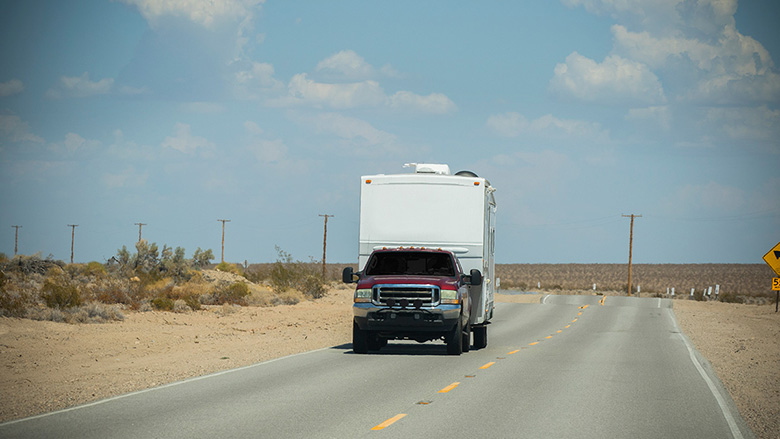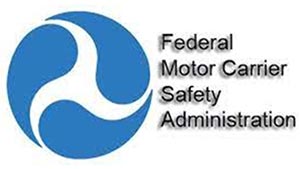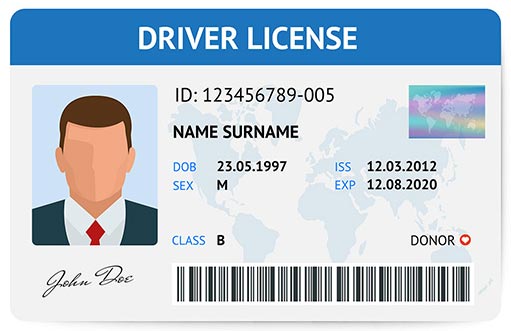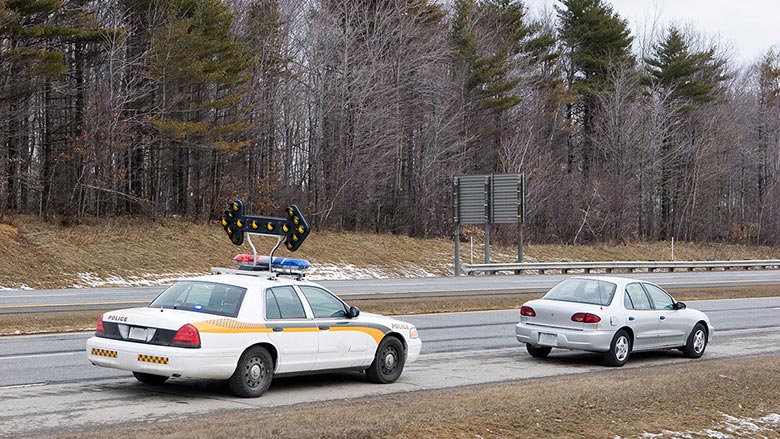Vehicle Safety Part 2: Fleet Safety and Compliance for Restoration Companies

Photo credit: Drazen Zigic / iStock / Getty Images Plus via Getty Images
This is the second of two articles covering driving safety and fleet vehicles for Restoration Companies. The first article created the foundation of your driving and vehicle safety program. I covered:
- Understanding Risk
- Driver Awareness
- Company Image
- Driver Training
- Vehicle Maintenance & Inspection
Did you miss Part I of the Vehicle Safety feature? No problem! Click here!
This article will build onto that foundation by covering the technical and often confusing topic of fleet safety and compliance. I will try not to bury you in details and provide plenty of resources and references. Buckle up, this topic gets technical quickly!

Photo credit: CRobertson / iStock / Getty Images Plus Getty Images
Who Regulates Commercial Vehicles?

The Federal Motor Carrier Safety Administration (FMSCA) regulates property and passenger carriers in the United States. Also, your State Department of Transportation may have additional requirements that you will need to discover and comply with.
Depending on your vehicles, you may need to apply to the FMSCA for a USDOT Number that is unique to your company and will need to be displayed on all vehicles that qualify for this system. (1) How do you know if you qualify? Keep reading in the next section!
Do FMSCA Regulations Apply to Me?
In the previous section I mentioned property and passenger carriers. In simple terms, property would include hauling things like equipment, building materials, or demolition materials Passengers would be people (think along the lines of a passenger van). If you transport either property or passengers for compensation, then you meet the initial requirements.
Next, you must determine if you have one or more vehicles that meet the definition of a Commercial Motor Vehicle (CMV). A CMV is any self-propelled or towed vehicle used on a highway for interstate commerce to transport property or passengers when the vehicle includes the following:
- A Gross Vehicle Weight Rating (GVWR) or Gross Combined Weight Rating (GCWR) of at least 10,001 pounds or more
- Is designed or used to transport more than 8 passengers, including the driver, for compensation
- Is designed or used to transport more than 15 passengers, including the drive, not for compensation
- Is used in transporting hazardous materials
Let’s take a minute to explain some key points:
Commerce/Compensation – you are transporting property or passengers as part of a service you are being paid for.
GVWR – this is the total weight of the vehicle and its maximum payload. The rating is typically found on a tag located somewhere on the driver’s door sill. For a trailer, it is found on a tag attached to the trailer frame.
GCWR – this is the combined weight rating of a vehicle and a trailer connected to it. For example, a truck with a GVWR of 10,000 pounds connected to a trailer with a GVWR of 5,000 pounds would have a Combined Weight Rating of 15,000 pounds. In other words, you add the two ratings.
Weight Rating – notice the term is rating, not the weight of the load. That means the vehicle or trailer qualifies as a Commercial Motor Vehicle based on the weight rating, not the actual weight of the load or number of passengers. This rating is very universally misunderstood!
Your Vehicles
To make the CMV determinations for your vehicles, you will need to create an inventory of your vehicles and trailers. The inventory should include information that may be needed by the FMSCA, including Model Year, Make, Model, Your Vehicle Number, VIN, and GVWR. Inventory all vehicles; remember, a light-duty truck may not qualify as a CMV by itself, but when combined with a trailer the combination may qualify.
In that inventory list, create a column to add a check to designate if the vehicle is a CMV. Create another column that indicates if, when the vehicle is combined with one of your trailers, together they qualify by their combined weight.

Photo credit: MCCAIG/ iStock / Getty Images Plus via Getty Image
Your Drivers
Drivers will need to meet certain qualifications if they drive a CMV. There are two basic layers of qualification:
- Operating vehicles with a GVWR or GCWR between 10,001 pounds and 26,000 pounds.
- Operating vehicles with a GVWR or GCWR of 26,001 pounds and more.
Drivers of the first group (10,001-26,000 pounds) have the following basic requirements (2):

Photo credit: Golden Sikorka / iStock / Getty Images Plus via Getty Images
- State driver’s license for this weight class
- DOT Physical/Medical Exam Certificate
- Track and follow Hours of Service requirements
- Complete a Vehicle Inspection Report
Drivers of the second group (26,001 pounds and more) must have a Commercial Driver’s License (CDL) and comply with all the requirements for that category (e.g. training, medical card, etc.). For the purpose of this article, I’m going to assume most Restoration Companies don’t have vehicles with this higher weight rating.
Two notes for this section:
- There are some exemptions and differences between intrastate (within state lines) and interstate (across state lines) transportation. Use the resources at the end of this article or from you state to determine if you qualify for the exemptions.
- Your state may have other specific driver requirements; contact your state DOT to determine that.
Appointing a Fleet Manager
Much like starting any effort that can have a significant impact on your business, you’ll need to assure you have a capable person managing the Fleet safety and compliance effort and consistently dedicating some time for the needs that will arise. That person will need to be very organized, willing to tackle new topics that initially may be challenging, and have the ability to dedicate some time to the effort without “dropping the ball”.
Also, depending on the size of your restoration company, your vehicles, and your driving distances, you could also consider hiring a transportation management company that can set all of this up for you and help with the ongoing requirements. When compared to large DOT fines, this could be a financially wise decision!
What is My Risk of Not Complying?
My experience is that fleet compliance sneaks up on you and sometimes blindsides you! I have been told about trucks pulling trailers getting pulled over for not stopping at a weigh station. Then there is always the possibility of getting in an accident and not being compliant.
Fines can often result from these situations. Additionally, I’m familiar with companies that were also forced to quickly register with the FMSCA and bring their vehicles and trailers into compliance. This can be a very large and complicated effort, all the while working under a regulator deadline!

Photo credit: ImageegamI/ iStock / Getty Images Plus via Getty images
A Summary of Basic Compliance Steps
Now that we have gone over some of the basics of fleet safety compliance, let’s review. This is not an exhaustive list; you will still need to confirm with the FMCSA and your state DOT what other things you’ll need to do.
- Create a Vehicle Inventory that includes all your company vehicles and trailers with all the needed information. Update the Inventory as new vehicles/trailers are purchased and others are sold.
- Register with the FMSCA, if required.
- Qualifying your drivers: make sure they have the correct license and medical evaluation for driving a CMV.
- Assure adequate insurance: make sure your vehicles are properly insured and understand your deductibles.
- Start Annual Vehicle inspections, depending on the whether the vehicle is a CMV and your state requirements.
- Track driver hours of service, depending on whether the vehicle is a CMV and the trips it makes (intrastate vs. interstate).
- Begin driver vehicle Inspection reports; again, this may be a requirement for a CMV or just a good practice for all other vehicles.
Alternatives and Options
Everybody always wants to know if they have options to avoid complying with regulations. In this case, there certainly are some basic options; however, you will need to evaluate if you can still conduct your restoration work with these sacrifices. More specifically, can you haul or tow the items needed with light-duty vehicles and trailers?
- Limit vehicle GVWR: only buy trucks or vans that are under 10.001 pounds GVWR (CMV territory) or under 26,001 pounds GVWR (CDL driver territory).
- Limit combined vehicle and trailer GVWR: keep the combined GVWR of the tow vehicle and trailer under the previously-mentioned 10,001 pounds or 26,001 pounds.
- Stay out of CDL territory: as mentioned, staying under a GVWR (single or combined) of 26,001 pounds and the significant increase in regulations and licensing that requires.
- Contract heavy and/or long-distance hauling: you can always choose to hire a commercial transportation company to haul those heavy loads and keep yourself out of the CMV or CDL territories.
I recommend spending some time understanding the FMSCA exemptions (3), along with researching your state DOT exemptions.
Summary
If you’re still reading this article, congratulations because you have made it through topics that confuse many people! While not covering every aspect of the Commercial Motor Vehicle and CDL world, I hope it has at least given you some insight on the requirements. I encourage you to evaluate your restoration vehicle fleet and understand what is expected of you by the FMSCA and your state DOT. Good luck with your efforts and always take advantage of resources available to help you!
Resources
- FMSCA Online Guide and Safety Planner -
https://csa.fmcsa.dot.gov/SafetyPlanner/Default.aspx - Newbie’s Guide to FMSCA Compliance -
https://csa.fmcsa.dot.gov/SafetyPlanner/Default.aspx - DOT Compliance for Small Business -
https://www.fleetistics.com/dot-compliance-for-small-business/ - FMSCA Regulations: A Guide for Fleet Managers -
https://www.samsara.com/guides/fmcsa-regulations/ - A Texas Motor Carrier’s Guide to Highway Safety -
https://www.dps.texas.gov/internetforms/forms/mcs-9.pdf
References
-
Federal Motor Carrier Safety Administration, Do I Need a USDOT Number?
https://www.fmcsa.dot.gov/registration/do-i-need-usdot-number -
New Hampshire Automobile Dealers Association, DOT Requirements: What You Need To Know.
https://www.nhada.com/blog/gross-vehicle-weight-rating-dot-requirements -
Federal Motor Carrier Safety Administration, Exemptions to the Federal Motor Carrier Safety Regulations (FMCSR).
https://www.fmcsa.dot.gov/hours-service/elds/agricultural-exceptions-and-exemptions-fmcsa-safety
Looking for a reprint of this article?
From high-res PDFs to custom plaques, order your copy today!








